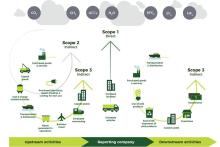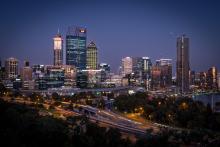

Governments and organisations around the world are making commitments to reduce carbon emissions, with the goal to achieving net-zero by 2050. However, when it comes to addressing the devastating environmental damage caused by human activity, it’s becoming clear that simply achieving net-zero isn’t going to cut it.
Aside from the fact that current commitments don’t actually put us on track to achieving net-zero by 2050, the bigger issue is that so much damage has been done to the natural environment, that merely ‘doing less damage’ is no longer an adequate goal. Not only do we need to stop doing more damage, we must reverse the damage done by repairing and restoring our natural environments. This is what it means to become ‘nature positive’. And it’s a goal so urgent that G7 leaders have come together to sign a 2030 Nature Compact; a global mission to ‘halt and reverse biodiversity loss by 2030’, with the hope that the biosphere will fully recover by 2050.
Approaching an irreversible tipping point
Human activity has negatively impacted the earth’s biodiversity. Through farming, fishing, mining, and deforestation, delicate ecosystems have been destroyed, resulting in hundreds of plants and animals becoming extinct in recent centuries, with millions more species at risk. Scientists warn that crucial ecosystems, such as the Amazon rainforest and the world’s coral reefs, are currently approaching an irreversible tipping point; the result of which could have devastating consequences for the environment, our food supply, and ultimately, human life.
The facts are nothing short of alarming. According to the World Economic Forum’s Global Risks Report, biodiversity loss and ecosystem collapse are amongst the biggest threats humanity will face in the next 10 years. The scale and urgency of the environmental crisis cannot be understated. While reducing carbon emissions is a critical step in slowing the earth’s warming, addressing biodiversity loss is equally critical - and must become an immediate priority for governments, corporations, and individuals alike.
Creating a nature positive world
According to A Nature-Positive World: The Global Goal for Nature by Dr. Harvey Locke et al, becoming nature positive would include “preventing the extinction of all known threatened species, protecting and conserving at least 30% of the world’s land, sea and freshwater systems, 20% native vegetation recovery in the most heavily transformed areas and ..bringing 350 million hectares of degraded and deforested landscapes into restoration by 2030.” If we are able to conserve and protect natural habitats, reduce pollution, and revitalise damaged ecosystems, there is hope that we will be able to improve the earth’s biodiversity. Not only would a nature positive approach reverse nature loss, it would purify water supplies, help to store more carbon, and also reduce the risk of further pandemics.
The Australian Government has committed to protect 30 per cent of the country’s lands and waters by 2030, while also setting a target of zero new extinctions. But the urgency of our biodiversity crisis is so pressing, that every organisation in Australia can take action to help the country toward becoming nature positive. One of the ways to do this, is by ensuring any carbon offsetting is being put toward biodiversity projects.
The Yarra Yarra Biodiversity Corridor
Situated north of Perth, Yarra Yarra Biodiversity Corridor sits along a 200km stretch of land that was drastically cleared for farming throughout the 20th century. However, since starting out on this ambitious project, Carbon Neutral has transformed large swathes of this dry, degraded landscape into a habitat for a myriad of flora and fauna. The first plantings in the early 2000s have now grown into 16,000 hectares of coverage in the Corridor, and the biosphere is beginning to recover. A 2014-15 ecological study identified around 54 bird species residing in the Yarra Yarra Biodiversity Corridor, with a more recent study identifying more than 100 subspecies of ants.
The positive outcomes of this project demonstrate that it is indeed possible to restore and regenerate ecosystems, even on the most barren lands. In fact, Carbon Neutral’s efforts have been so successful that it has become the first and only organisation in Australia to be awarded Gold Standard certification for climate interventions.
A win for the environment, and the economy
Nature positivity isn’t just about restoring natural systems – restoring the biosphere has economic benefits too. The World Economic Forum suggests that becoming nature positive could create business opportunities worth $10 trillion and could create 395 million jobs by 2030. Conversely, Deloitte estimates the cost of climate change could cost the global economy $78 trillion between 2021-2070.
The state of the planet in 2024 is dire. But it is not without hope. There is still time to make the changes required to halt and reverse biodiversity loss. In parallel with the global goal of net-zero by 2050, we can also aim to become nature positive by 2030 with the goal to restoring the biosphere by 2050. And in doing so, we can create a resilient and flourishing biosphere within a thriving economy that can be enjoyed for generations to come.
The team at Carbon Neutral is here to help you make positive changes in your business.
Please give one of our consultants a call today on (08) 9200 4424 or 1300 851 211.
You can also jump on our website at https://www.carbonneutral.com.au and use our free Carbon Calculator – that can help start your process.













